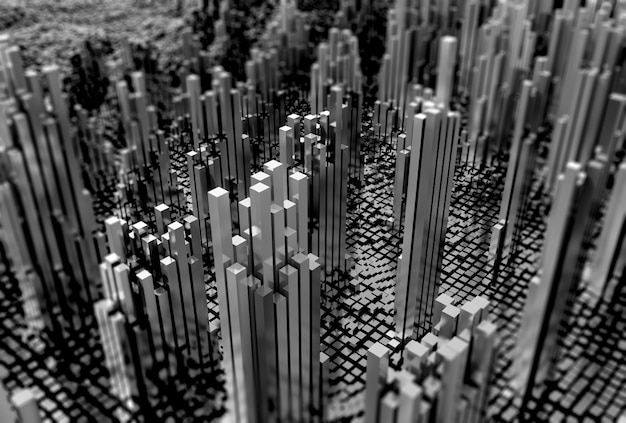Real-Life Applications of Fractals
Last Updated :
02 Apr, 2024
Applications of Fractals: Fractals are complex geometric shapes that exhibit self-similarity at different scales. They are generated by repeating a simple process iteratively resulting in intricate and fascinating patterns. The Fractals have found numerous applications across various fields due to their unique properties and visual appeal.
In this article, we are going to learn about fractal definitions, applications of fractals, and others in detail.
Fractals
Fractals are mathematical shapes that split into smaller versions of themselves, and the parts become a reduced-size copy of the whole. They are sometimes generated by continuously repeating a basic procedure in an endless cycle or series. The feature of self-similarity is central to fractals.

Suppose you are asked the question what is the exact coastline of Kerala? The answer to this question is approximately 580 kilometres. But to get the exact answers concept of fractals is used.
Applications of Fractals
Fractal shapes exist throughout the human body, in lungs, blood vessels, and neurons. Fractals can also be used to aid diagnosis of abnormal heart rhythms and tumours. Fractals have a wide range of applications in mathematics and other fields. Some of the most notable applications include:
- In Natural Phenomena and Geological Formations
- In Medical Imaging and Biomedical Analysis
- In Computer Graphics and Visual Effects
- In Financial Markets and Econophysics
- In Artificial Intelligence and Pattern Recognition
- In Art, etc.
Let’s learn about them in brief.
In Natural Phenomena and Geological Formations
Fractals of different dimensions can also model different structures in nature, especially those with self-similarity at different scales. Consequently, fractal geometry has been useful in studying many natural phenomena and geological formations. Coastlines might look smooth from a distance due to their small variation in the sea level, but up close we see jagged nooks and bays of different size scales – the fractal analysis gives us insight into understanding the complex structures of nature.
In Medical Imaging and Biomedical Analysis
Fractals are used as a research tool in medical imaging, which includes the use of MRI and CT scans. In the past decade, Fractal analysis has been applied to much more complex biological structures by studying the branching patterns of neurons, providing vital clues to their structure and function.
In Computer Graphics and Visual Effects
Fractals are widely used in the computer graphics and visual effects. It is used to created textures and landscapes of video games, movies and virtual environments looks extremely realistic. Fractal algorithm is widely used in creating realistic natural scenery such as terrain of the games, clouds, and trees which looks like real life.
In Financial Markets and Econophysics
We can use fractal geometry to analyse the financial markets by using econophysics to model the irregular, complex patterns in stock prices and interest rates, as well as other financial instrument prices. We can use Fractal analyses to the forecast the market trends and to the evaluate market patterns.
In Artificial Intelligence and Pattern Recognition
They are used by artificial intelligence and pattern recognition for analysis and classification of big data. The Fractal-based algorithms can be used in image processing, speech recognition or machine learning to the extract meaningful patterns from the noisy data.
In Art
Artists use fractal geometry as a foundation for creating visually captivating artworks. They employ mathematical algorithms to generate complex fractal patterns, which are then incorporated into paintings, digital art, sculptures, and other forms of visual expression.
Conclusion
Fractals provides a powerful framework for modeling, analyzing, and creating complex patterns and structures across various domains, making them valuable tools in science, technology, engineering, mathematics, and the arts.
FAQs on Applications of Fractals
What are fractals?
Fractals are geometric shapes or patterns that repeat the themselves at different scales exhibiting self-similarity and complexity.
Why are fractals important in our daily life?
Fractals are an important concept of mathematics that helps us to study and understand important scientific concepts, including: growth of bacteria grow, patterns in snowflakes, brain waves, and others.
How are fractals used in environmental studies?
Fractals help model natural phenomena like coastlines and clouds enabling the scientists to the understand complex environmental processes and predict ecological changes.
What role do fractals play in digital art and design?
Fractals serve as a source of inspiration for the artists and designers facilitating the creation of the visually appealing graphics, illustrations and multimedia artworks.
Can fractals be applied in urban planning and architecture?
Yes, fractal geometry influences architectural design principles and urban planning strategies contributing to creation of the sustainable and aesthetically pleasing built the environments.
Are fractals relevant in chaos theory and dynamical systems?
Yes, fractals are closely associated with the chaos theory and dynamical systems providing the insights into behavior of the nonlinear systems and chaotic phenomena.
Share your thoughts in the comments
Please Login to comment...